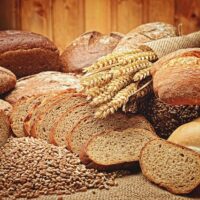Veggie Stuffed Turkey Burgers
(The following recipe first appeared in the September 2020 issue of Get Healthy, a publication of The Northwest Indiana Times.)
Ingredients:
1 tablespoon avocado oil
1/2 cup diced onion
1/2 cup chopped mushrooms or 4-ounce can of mushrooms, drained and chopped
1 tablespoon balsamic vinegar
2 cups fresh spinach
1 small tomato, diced (liquids drained) or 1 tablespoon tomato paste
1 tablespoon Dijon mustard
Sea salt and pepper, to taste
16 ounces ground turkey (can substitute ground grass-fed beef or bison)
8 outer leaves of romaine lettuce
Instructions:
1. Heat oil over medium-high heat. Add onion, cook for 4 minutes. Reduce heat to medium. Stir in mushrooms.
2. Add balsamic vinegar and stir. Cook for 5 minutes, stirring occasionally.
3. Add spinach and tomatoes and cook for another minute. Stir in mustard and turn off heat. Season with salt and pepper. Place spinach mixture in the refrigerator and cool for 15 minutes.
4. Form turkey into 4 equally sized balls. With your fingers, make a well in the center of each ball. Stuff about 2 tablespoons of spinach mixture inside each ball. Seal the top and flatten to form a patty. Reserve any leftover spinach mixture to serve on the side.
5. Pan-fry or broil your burgers:
• To pan-fry: Heat a pan and add a little oil. Add the patties and cook for about 5 minutes on each side or until desired doneness is reached.
• To broil: Set oven broiler to “high.” Place patties on a foil–lined baking sheet on top oven rack. Broil for about 3 minutes, flip patties over, and broil for about another 2 to 3 minutes or until burgers reach desired doneness.
6. Let the burgers rest for a couple of minutes.
7. To serve, take 2 romaine leaves and sandwich burger between them.
Notes: Tomato paste is available in a tube, and is great when you only need a small amount. The tube of paste stays fresh for months in the refrigerator. If you don’t care for the vegetables used to stuff the burgers, use what you like and they’ll be delicious.








